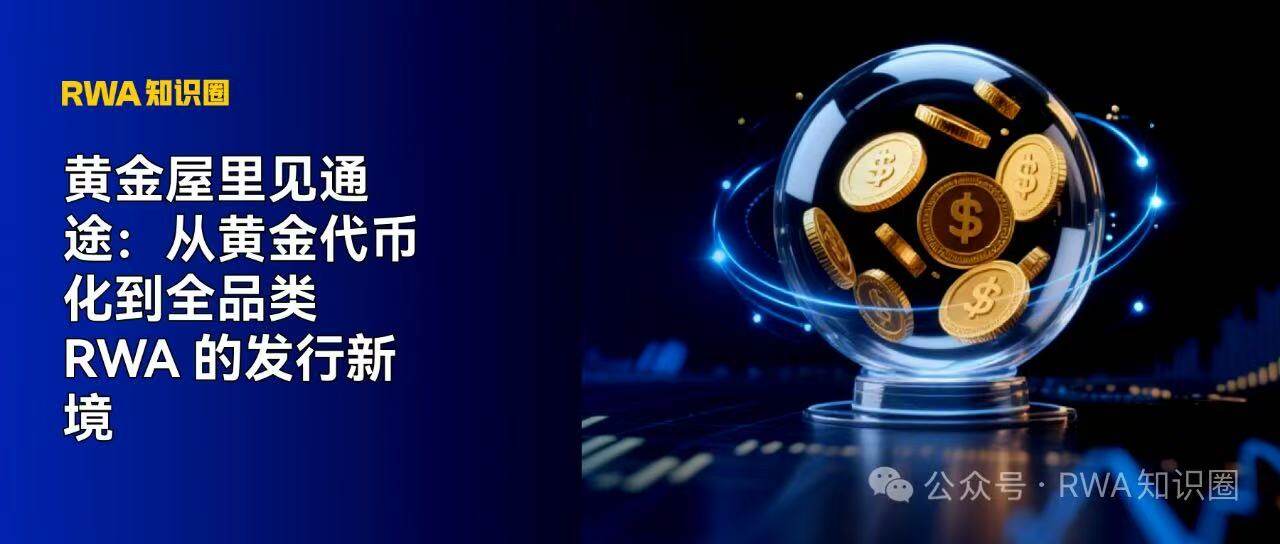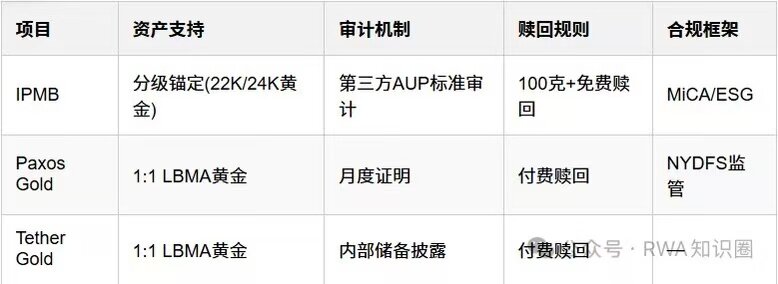
1. Gold Tokenization: A New Paradigm to Solve the Dilemma of Corporate Gold Assets
Gold, as a core means of value storage, is favored by central banks around the world amid geopolitical conflicts and the Federal Reserve's interest rate cuts. The stablecoin legislation in multiple countries requires anchoring to fiat currency or gold, further generating additional demand. However, more critically, physical gold, as a "negative yield asset," lacks continuous returns (such as dividends or interest), resulting in significant opportunity costs and making it less attractive compared to cash-flow-generating assets. Coupled with a lack of market transparency and frequent exit scams, consumer trust is further weakened. Medium-sized enterprises that own gold mines find themselves in a dilemma: while gold prices are high, minerals and retail gold struggle to enter national reserves, facing high storage, insurance, and maintenance costs.
Gold tokenization is becoming a win-win breakthrough point for both supply and demand sides—restructuring the value of gold assets through fractional ownership, seamless trading, and high accessibility.
2. The Core Proposition of Gold RWA: Designing a Differentiated Economic Model
The core pain point of physical gold lies in holding costs: investors pay an average of about 1% in storage fees annually, which significantly erodes long-term returns; retail investors face even higher costs and limited choices. Additionally, the process of liquidating physical gold is cumbersome, with settlement taking days to weeks, starkly contrasting with the instant transactions of modern finance. Any RWA issuance must delve deeply into economic model design, especially in the gold sector.
Existing solutions like gold ETFs provide investment exposure (with a global scale exceeding $220 billion), but their annual management fees of 0.20%-0.50% mean that investors only gain rights to price fluctuations, deviating from gold's core positioning as a hedge against geopolitical risks and an inflation barrier.
Therefore, gold RWA must break out of traditional frameworks: constructing a composite economic model that integrates collection, trading, payment, and investment to truly differentiate from futures and ETFs.
3. Dual-Currency Model: An Innovative Structure Balancing Liquidity and Asset Certainty
To meet the needs of all parties in the model, a dual-currency model combining NFTs and RWA tokens must be designed. This model should allow the two types of digital assets to form functional complements: one token focuses on liquidity and payment scenarios, anchoring the value of the underlying asset while maintaining price flexibility, facilitating high-frequency trading and daily settlements; the other NFT emphasizes the uniqueness and long-term value of the asset, corresponding to the ownership of specific underlying assets, embedding traceability information to enhance collectible attributes and trust endorsement. At the same time, a conversion mechanism between the two must be established, achieving value interchange through rules like burning and staking, ensuring short-term circulation efficiency while meeting long-term holding needs, further reinforced by third-party audits and transparent reserve management to build trust and expand diverse application scenarios to form an ecological closed loop. In the digitalization practice of gold assets, the IPMB Group, which holds the majority stake in Ghana's gold mine (with an annual output of 110 tons), has conducted relevant explorations—designing two types of digital assets: GPRO tokens and GEM NFTs, attempting to build a gold tokenization ecosystem:
GPRO Tokens
- Nature: ERC-20 standard fungible tokens, deployed on the Polygon network, with plans for multi-chain support.
- Gold Support: 1 GPRO anchored to 1 gram of 22K raw gold (Dore), price linked to gold value, with a natural lower limit.
- Core Function: An ecological payment tool, usable for purchasing goods/services, staking for discounts on GEM NFTs; supports instant trading and cross-chain transfers, suitable for short-term gold price speculation.
GEM NFTs
- Nature: Non-fungible tokens corresponding to specific 24K physical gold (gold bars/coins), with metadata containing traceable information such as source and purity.
- Gold Support: 1:1 backed by LBMA-certified 24K gold, independently audited reserves by a reputable accounting firm.
- Core Function: Represents partial ownership of gold, supports long-term holding (no custody fees for the first 5 years), free physical redemption for amounts over 100 grams, tradable in the NFT market.
The two types of digital assets, through functional complementarity and linkage mechanisms, jointly form a gold tokenization ecosystem that balances liquidity and long-term value, covering payment transactions and asset certainty. This structure leverages the efficiency of blockchain technology while retaining the stability of gold as a value store, innovating and optimizing traditional gold investment models, and providing a reference path for small and medium-sized enterprises to issue collectible RWAs.
4. Breaking the Trust Dilemma: Full-Chain Transparency Practice
Of course, beyond designing economic models, the core challenge in issuing gold RWAs lies in establishing a full-chain barrier to market trust: achieving independent authoritative audits of reserve assets to verify sufficient collateral, addressing the efficiency issues of real-time data transmission and synchronization across links to ensure transparency, and constructing a full-process asset traceability system from mining to storage to address the ambiguity of sources and compliance risks caused by supply chain fragmentation. Current mainstream projects have provided practical references:

The above projects reflect the complex paths of trust building for gold RWAs through different practices in reserve verification, redemption rules, and compliance implementation, also clarifying the key areas that enterprises need to break through to promote RWA issuance.
5. From Cognition to Practice: Seizing the New Infrastructure of the RWA Track
Behind the global central banks' reserves of over 32,000 tons of gold and the 4,800 tons of demand in 2023 (a year-on-year increase of 3%) lies a common structural contradiction across the entire RWA track—on the supply side, constrained by the inefficiencies and high thresholds of traditional asset circulation, while on the demand side, the boundaries are continuously expanding due to the digitalization wave. This contradiction is particularly prominent in small and medium-sized enterprises: facing common dilemmas of poor asset liquidity and high holding costs, while also limited by compliance barriers, technical capabilities, and ecological resources, making it difficult to break free from the shackles of traditional models.
"There is a house of gold in the book"—more important than dissecting individual cases of gold tokenization is to extract universal logic from specific practices and establish a systematic understanding of the RWA track:
- Is it suitable for issuance → Track opportunity diagnosis
- How to design the model → Economic architecture design
- How to navigate compliance → Global regulatory pathways
- How to connect resources → Ecological partner linkage
The RWA accelerator helps enterprises bridge the entire process from "can it be issued" to "how to issue," empowering not only the rebirth of gold asset value but also promoting the digital upgrade of various assets in the RWA track.
免责声明:本文章仅代表作者个人观点,不代表本平台的立场和观点。本文章仅供信息分享,不构成对任何人的任何投资建议。用户与作者之间的任何争议,与本平台无关。如网页中刊载的文章或图片涉及侵权,请提供相关的权利证明和身份证明发送邮件到support@aicoin.com,本平台相关工作人员将会进行核查。




